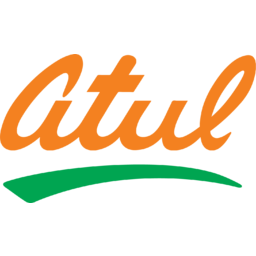
P/E ratio for Atul (ATUL.NS)
P/E ratio as of April 2024 (TTM): 43.7
According to Atul's latest financial reports and stock price the company's current price-to-earnings ratio (TTM) is 43.71. At the end of 2022 the company had a P/E ratio of 43.8.
P/E ratio history for Atul from 2019 to 2023
PE ratio at the end of each year
| Year | P/E ratio | Change |
|---|---|---|
| 2022 | 43.8 | 5.33% |
| 2021 | 41.6 | 35.66% |
| 2020 | 30.7 | 62.52% |
| 2019 | 18.9 |
How to read a P/E ratio?
The Price/Earnings ratio measures the relationship between a company's stock price and its earnings per share. A low but positive P/E ratio stands for a company that is generating high earnings compared to its current valuation and might be undervalued. A company with a high negative (near 0) P/E ratio stands for a company that is generating heavy losses compared to its current valuation.
Companies with a P/E ratio over 30 or a negative one are generaly seen as "growth stocks" meaning that investors typically expect the company to grow or to become profitable in the future.
Companies with a positive P/E ratio bellow 10 are generally seen as "value stocks" meaning that the company is already very profitable and unlikely to strong growth in the future.